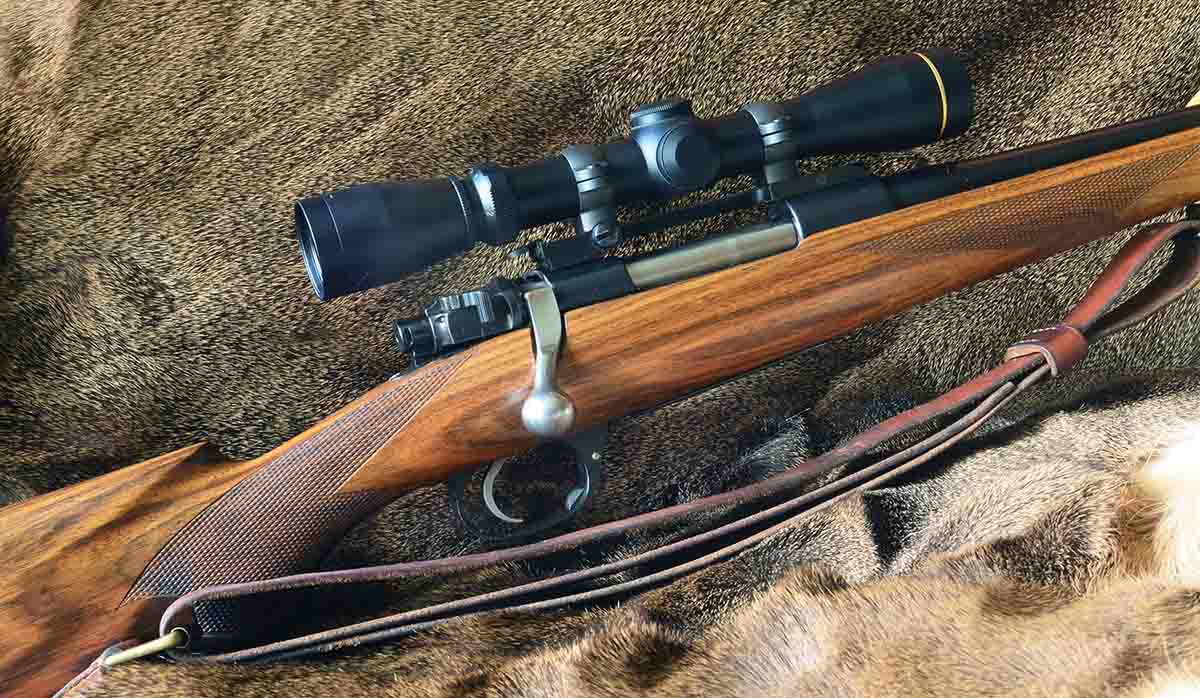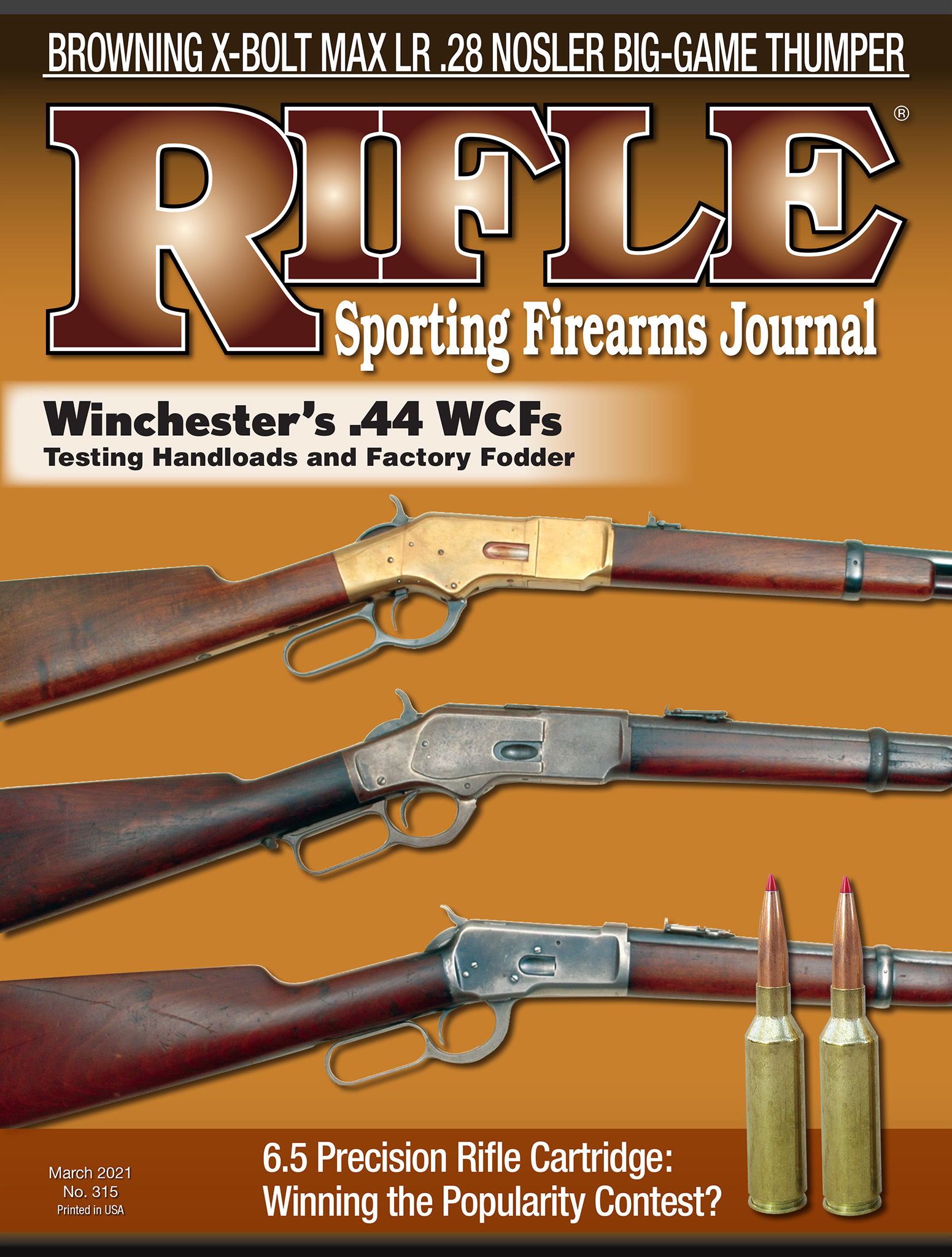Walnut Hill
The Myth of the Perfect Deer Rifle
column By: Terry Wieland | March, 21

The perfect rifle for prowling creek beds, bumping whitetails at close range and shooting fast at a disappearing target, is not much good for mule deer in the Montana foothills, where your closest shot might be 250 yards. Then there’s the Coues’ deer of southern Arizona which, according to the practitioners, demands a rifle of pinpoint accuracy out to 500 yards.
My first deer rifle, after long and careful study of the gun magazines in the 1960s, was a Marlin 336 in .35 Remington. My 15-year-old brain reasoned that the .35 Remington was better than the more popular .30-30 because I might come across a black bear. Generally, the woods where we hunted never offered a shot at more than 100 yards, and seldom that far.
Twenty years later, the Marlin was long gone, sold to finance my first trip to Africa, and I was reduced to using a cut-down P17. I was hunting in the same woods, though, and my in-depth analysis determined that a new ideal rifle would be the Ruger Model 44 with a scope.
In hunting, situations rarely occur exactly as you envision. The Ruger 44 having been sold (alas, before they became collector’s items), I hunted deer in Ontario first with a lightweight Mauser in 6.5x55, and later with a Dakota Arms .30-06. When I finally got a shot at an Ontario buck (after 27 years) it was standing on a rocky point across 250 yards of open water. Neither the 336 nor the Ruger could have coped, but the Dakota handled it perfectly.
Another example, not involving deer, was hunting wolves near my home. Expecting a long shot across open fields, I set out with a heavy-barreled .30-06 with a 10x scope. Creeping along a split rail fence separating a hayfield from a swamp, I kicked out half a dozen wolves from where they were laying up, contemplating their next outrage. At a distance measured in feet, all I caught was a flash of grey in the scope as they scattered into the cedars.
Another attempt at the perfect deer rifle was a lightweight custom bolt action in 6.5x55. I didn’t like the action, hated the safety, and it was so light I couldn’t hit a thing offhand, and not much from sitting. It was sure nice to carry, though.
A dozen years after the wolf episode, I found myself in the Virginia mountains hunting whitetails with a century-old Winchester Model 94, chambered in the also century-old .32 Special with a Lyman tang sight. I was using Winchester Silvertips. As it turned out, I came home from that outing with two does and a button buck in the coolers. The little buck (mistaken for a doe) was shot at about 10 yards up a steep bank, near dark; the two does were taken, as I recall, at 60 or 70 yards along a creek bottom.
In both cases, I happened to be carrying the right rifle for the situation, but I could just as easily have been carrying the wrong one. The Dakota .30-06 and that ancient .32 Special could hardly have been less alike.
For years, the question of the perfect deer rifle was a staple of gun writers, trotted out regularly as new equipment came on the market. Because most readers were deer hunters of one sort or another, it was a subject of guaranteed interest, if only to incite indignant letters.
They generally dealt with eastern woods hunting, as opposed to western mountains. That was the “deer rifle” of old. This wasn’t just eastern chauvinism. In the West, a man was more likely to use the same rifle for deer as for elk, or at least have a rifle suitable for a range of game.
Today, the old-style still-hunting of the eastern woods is almost a thing of the past. The usual method is from a stand, often over a food plot, and it’s unusual to see an unscoped rifle. Even so, the right one depends heavily on local conditions. A Texas friend has his own deer lease, with food plots among the mesquite. The usual range is about 60 yards, but he uses a .300 Winchester Magnum. Why? Because the brush is so thick that a deer that runs even a short distance is difficult to find, never mind the rattlesnakes.
In the East, some hunters argued for a more powerful rifle because, if your deer ran a hundred yards before collapsing, you might find another hunter attaching his tag. If the woods are that crowded, frankly, you’ll find me in the nearest saloon.
The “dense” eastern woods are actually relatively open compared with the alders of coastal Alaska, haunt of the diminutive and elusive Sitka blacktail. There you might get a shot at five yards, in which case you’d think my Ruger 44, sans scope, would be ideal. But in that stuff, when there’s a good chance of encountering a brown bear, most hunters leave their perfect deer rifle at home and carry a bear rifle. At least, I would.
Objectively speaking, no deer – Coues’, Sitka, whitetail or mule deer – requires a huge amount of killing. Suitable cartridges range from the more powerful .224s (where legal and with the right bullet) up through the .243 Winchester and .250 Savage to the .308 and .30-06. The ancient .30-30, .32 Special and .303 Savage have killed tens of thousands of deer. Any of the ubiquitous mid-power 6.5s that are all the rage work beautifully.
It would be hard to find a neater stalking rifle than the Mannlicher- Schönauer Model 1903 in 6.5x54, and it’s been around almost 120 years. Another great is the Savage Model 99E (short barrel, straight stock), the original featherweight from the 1920s in .250-3000. But then, chamber a light bolt action in .250-3000 and it’s a combination that would be hard to beat. There’s nothing the 6.5 Creedmoor can do on a deer that the .250-3000 won’t do just as well out to 300 yards. And – be real, now – how many deer are legitimately shot farther away than that? If you want longer range, the .270 Winchester’s credentials are unquestionable.
In the end, it’s less the cartridge, or even the rifle type (action, barrel length, scope) than the kind of hunting you do, and the country you do it in.
My old friend Clare Irwin, who first took me deer hunting when I was 15, killed more deer in the plentiful 1930s than I’ve ever seen. His rifle was a Winchester 94 .30-30 with a Lyman tang sight. It had no bluing left and the stock was rubbed bare, but it was well looked after. If he went out in the middle of the day, when he might put up a ruffed grouse, he carried a pump-action 12 gauge with birdshot in the chamber and the next round a slug. If he unexpectedly flushed a deer instead of a grouse, he pumped once to chamber the slug and got the shot off. The only sight was the tiny shotgun bead. Clare had not killed many deer that way, but he had a few.
That tells you something about the perfect deer rifle for the eastern woods. You don’t need much, but you do need speed. But it’s not a combination you’d carry most other places where deer are hunted.
After all this, if going deer hunting tomorrow, I’d take either my Al Biesen .270 or a custom Mauser .250-3000, both with scopes. But I still have the Winchester 94 .32 Special and the Savage 99E .250, and wouldn’t feel really under-gunned with either.


